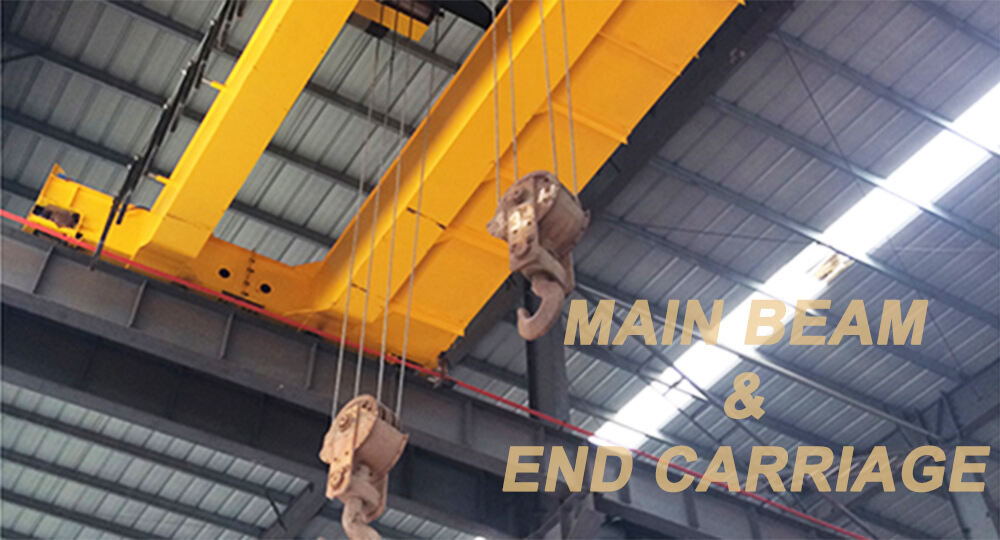In the main structure of a overhead crane, the main girder and end carriages are inseparable core components. Through precise connection and coordinated functionality, they jointly bear the weight of the equipment and transmit operational loads, ensuring stable and safe operation during lifting operations. The following details their close relationship from the perspectives of structural connection and functional division:

Structural Connection: Precise docking forms the equipment's "load-bearing frame"
1.Connection Method and Positioning: The end carriages are located at each end of the main girder and precisely docked with the main girder ends via flanges. Matching flanges are welded to the ends of the main girder. After the flanges at each end of the end beam mate with the main girder flanges, they are fastened with high-strength bolts. During connection, the flange flatness and bolt tightening force must be strictly controlled to ensure a tight, gap-free fit and prevent relative displacement under load. This connection method not only transmits vertical loads but also withstands horizontal operational impacts, forming a unified load-bearing structure between the main girder and end carriages.
2.Structural Complementarity: The main beam is typically a box or I-shaped structure, emphasizing longitudinal load-bearing capacity and supporting the trolley mechanism and lifting loads. The end carriages are box-shaped or simplified structures. In addition to being connected to the main beam, they also require wheel assembly mounting holes machined into the web for mounting the wheels of the trolley mechanism. This complementary structural design not only achieves the functional integration of "longitudinal load bearing and lateral movement," but also enhances the overall structure's torsional and lateral bending resistance through a rigid connection, preventing frame deformation during operation.
Functional Division: Collaborative Support for Equipment "Operation and Load Bearing"
1. Main Beam: Core Load Bearing and Trolley Support: The main beam is the "longitudinal load-bearing core" of the equipment, performing three primary functions: first, directly bearing the weight of the trolley mechanism, providing stable support for lateral movement of the trolley along the main beam track; second, withstanding the vertical pressure of the lifting load, transferring the load to the end carriages at both ends through its own structural strength. The main beam's load-bearing capacity directly determines the equipment's maximum lifting capacity and operational stability.
2. End Carriage: Horizontal Connection and Gantry Drive: The end carriage serves as the equipment's "lateral connection and movement hub," serving two primary functions: First, it serves as a bridge connecting the main beam and the gantry mechanism, evenly transferring the vertical load (including the equipment's own weight and the hoisting load) from the main beam to the wheel assembly, which then applies the load to the factory tracks. Second, it carries the gantry mechanism's drive components (such as the motor and reducer). By driving the wheels, it drives the entire machine longitudinally along the factory tracks, enabling wide-area lifting coverage.
Functional Synergy: During lifting operations, the load lifted by the hoisting mechanism is transferred to the main beam via the trolley. The main beam then distributes the load to the end carriages at both ends. The end carriages bear the load transferred from the main beam while, through the gantry mechanism, driving the main beam and trolley for synchronous movement, achieving longitudinal transport of the load. The lateral movement of the trolley along the main beam, combined with the longitudinal movement of the gantry along the tracks, ultimately enables precise three-dimensional handling of the load. This functional synergy of "main beam load + end beam drive" is the core logic for efficient overhead crane operations.
 Hot News
Hot News2025-12-23
2025-12-19
2025-12-19
2025-12-12
2025-12-12
2025-12-05